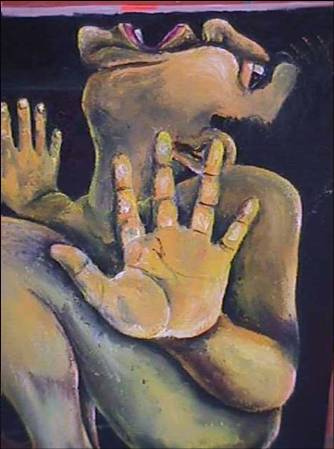
The 20th Anniversary of Iranian Political Prisonner's Massacre in Summer 1988
Montreal, September 19-21, 2008
“I am not a victim, I am a woman who does not shut up and who – in spite of the pain – is not going to take back her accusation. Not because I believe in the system of justice of the authorities, but because I am not willing to play their game and let everything be forgotten. People need to know what has happened and understand that if we accept it, there will be a repetition. We cannot and should not permit any more impunity.” (a letter written by Norma Jimenez, ex political prisoner)
First of all I would like to thank the Organizing Committee for inviting me and giving me the opportunity to speak at this event.
I am a psychologist and psychotherapist working with the Collective against Torture and Impunity (CCTI) in Mexico. CCTI is an independent human rights organization that is focusing on the problem of torture, bringing together survivors of torture, their families and a team of health professionals.
Our main activities include the support for torture survivors, which means providing medical, psychological and legal assistance for the case. And we accompany survivors on their long way towards justice. We also realize activities to raise public awareness, documentation and research regarding torture as well as training for other professionals.
A lot of our work is also realized inside the prisons, because a great number of survivors get long prison sentences based on the forced confessions they make under torture.
The motivation or the philosophy of our work may be resumed with this: the struggle for a better world is a long one and we cannot allow to loose anybody in this struggle. Torture has a devastating effect on everybody and it is our obligation as comrades to support those who suffered it.
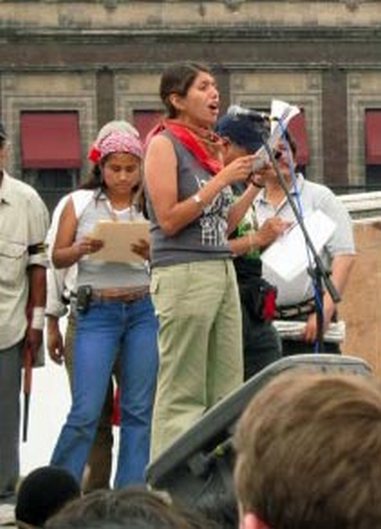 In these days we have heard a lot about repression, torture, prison and the impact it has on people for the rest of their lives. Every single story that was told is full of suffering and I guess we can say that in many cases the atrocities people went through changed their life, their dreams, plans and perspectives.
In these days we have heard a lot about repression, torture, prison and the impact it has on people for the rest of their lives. Every single story that was told is full of suffering and I guess we can say that in many cases the atrocities people went through changed their life, their dreams, plans and perspectives.This seminar is in commemoration of the many who gave their lives and were brutally killed because they meant a risk for the political system in which they lived and struggled for changes. It is important that we do not forget a single one of them because their struggle and their death are part of the historical memory of Iran, just as the many who were killed in other places represent the same thing for their countries.
At the same time, a big part of you are survivors of the horror of persecution, torture chambers, high security prisons and your presence tells us about human strength, the force of individuals confronting situations that are beyond our imagination. So whenever we talk about repression we also need to talk about resistance and what helps people to survive the unspeakable.
Political repression is inherent to any society that is built upon the dominance of one group over the other. Inequality, exploitation, injustice, poverty, discrimination, exclusion, oppression always lead to discontent and eventually to upheavals, struggles to change the existing conditions or processes of organization in order to change the political system or structures. To prevent this the group in power, the ruling class needs to apply social control that can take different forms: the use of mass media, education, religion, propaganda, etc.
Repression, open or covered is a very visible form of social control – it is an option for every state – including the so-called democracies –and applied according to the needs and the correlation of forces in society. Repression uses different instruments that are very similar in the different countries and historical moments: executions, massacres, torture, imprisonment, forced disappearance.
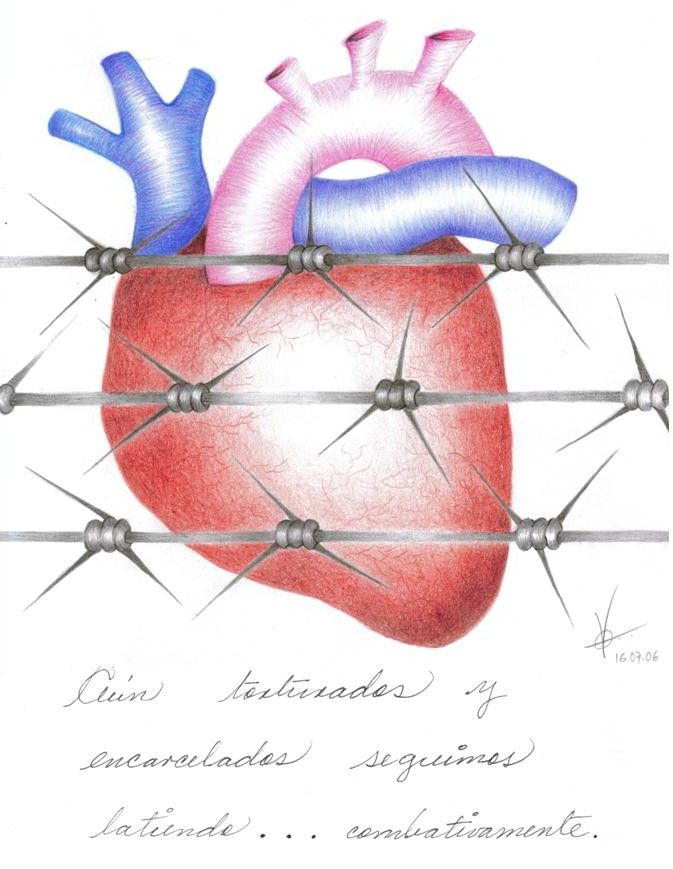
Torture is just one instrument from the big tool kit of state repression. It is the exercise of power in order to maintain a specific system and defend it against any emerging danger or opposition. It is used to secure dominance, to stabilize existing power structures, to fight social resistance and promote specific economic-political interests. It is well-planned, studied, torturers are trained and over the time the different methods have been perfectioned (perfected) and at least since September 11th we have seen that it is being legalized and accepted, with the United States as a pioneer in this sense.
In a political context torture is applied selectively against activists and massively against groups of the population connected to processes of organization. Torture not only aims at damaging at the most profound level the individual and its social relations but also aspires to intimidate others, securing with this reactions of fear, inhibition, paralysis, hopelessness and conformity throughout society (Lira. 1995). It is an exemplary punishment to provoke collective fear due to the possibility to suffer the same destiny.
Torture is maintained or reappears in so many countries of the world because of the overwhelming impunity for the material and intellectual perpetrators. In this line of thoughts, the struggle against torture, if it is taken seriously, is not only a struggle against a violation of human rights. Struggle against torture means a confrontation with the system because it finally strives to destroy a system built on dominance and struggles for a system based on equality and human dignity.
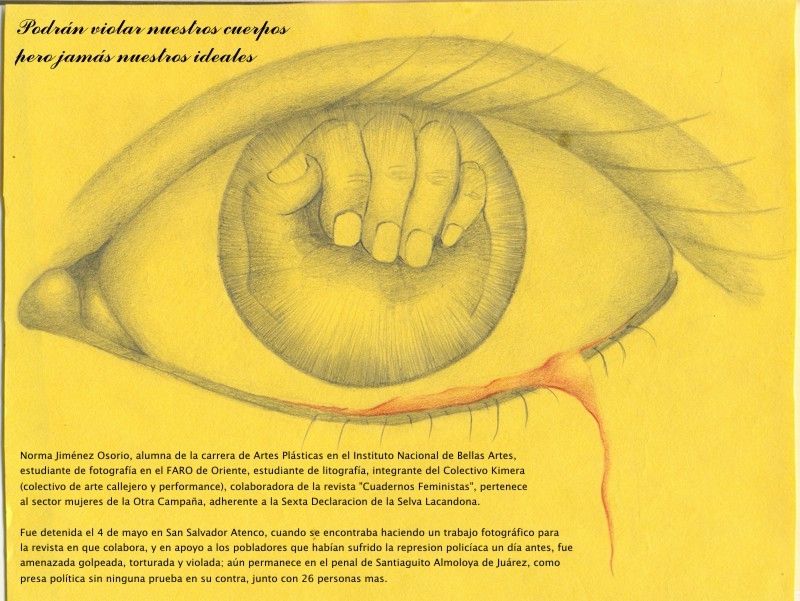
The aim of torture is to break the personality, the identity of the tortured, manipulate him/her and force him/her to show a certain behaviour favoured by the torturer. The person shall be left as a broken human being, visible example for everybody who could possibly show similar ideas or activities. Torture is therefore never directed only against the individual, it always aims against the social network, the political groups of reference and the society as a whole as well. Summerfield (1995) described it as the intent to destroy the economic, social and cultural worlds of the victims. The frequent or systematic use of torture is meant to provoke and spread fear, terror and mistrust, to intimidate and paralyse, to break resistance and finally control and manipulate the society.
Torture of women generally includes sexual torture, an especially devastating method of torture. Sexual torture perceives the woman as property and sexual object. The invasion into and manipulation of her body shall demonstrate and symbolize absolute control over her will, her life and her destiny. The torturer, the police agent, soldier or others use the female body in order to demonstrate their power and want to make clear who is giving orders and who has to obey. In this sense sexual torture is an exemplary punishment of fighting and rebellious women. Of all those who have dared to break out of their traditional roles, assume responsibility and leadership and question the existing system of dominance. Because this is something that we were never forgiven: stand up against the existing structures of power and also stand up as women. Using torture the male torturer re-establishes the existing structures of dominance, subjects the woman and forces her back into the position where he and the society want to see her. At least he intends to do so, because many women have shown us that the torturers can subject their bodies but did not succeed in taming their spirit, their will and their convictions.
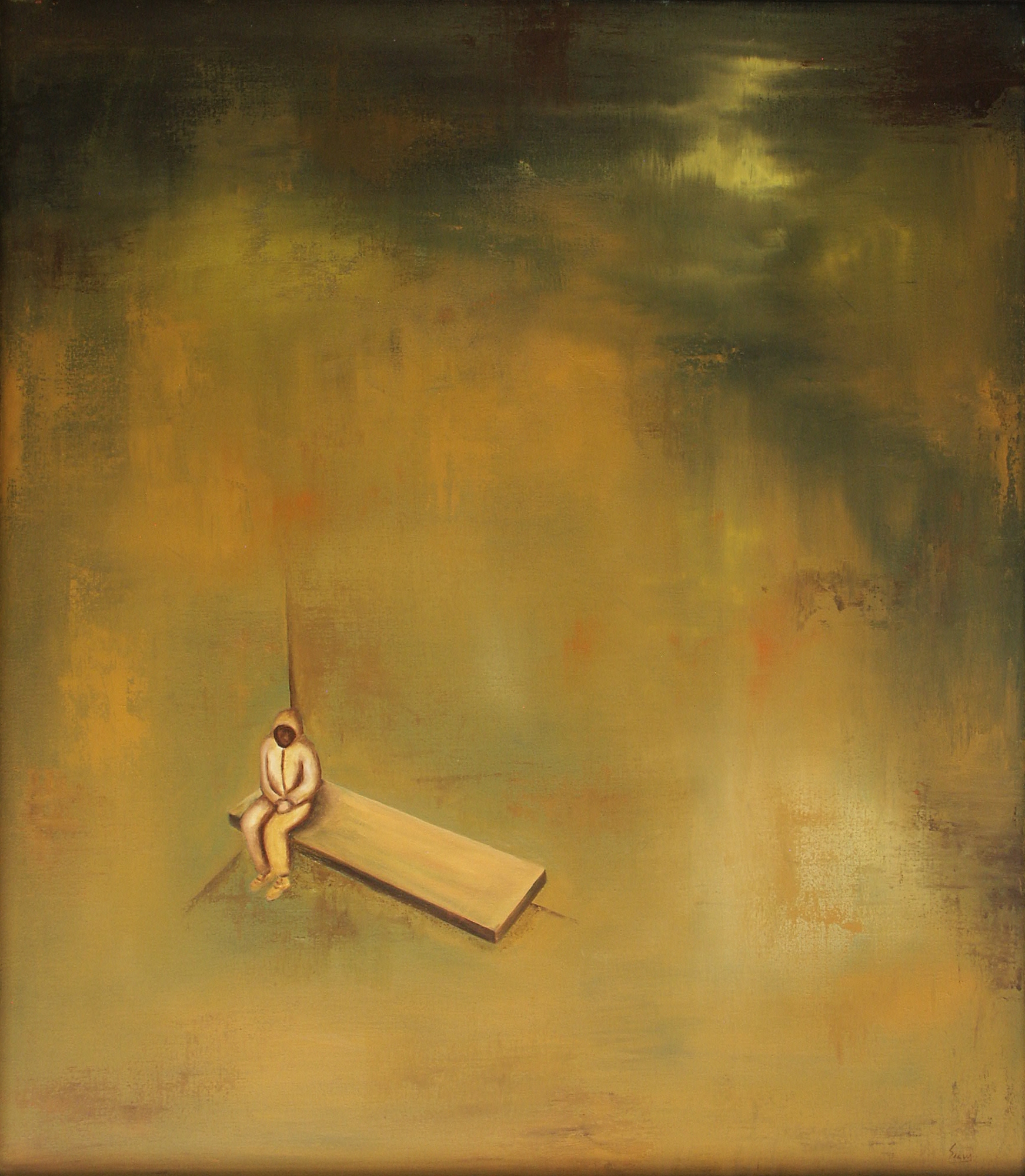
Rape and other forms of sexual torture try to invade and destroy the most intimate and fundamental areas of personality and human dignity. That is one of the reasons why the suffering does not end after torture, even when the women have already been released from prison. The traces cannot be wiped out, the memories will be there for the rest of the life and the consequences of sexual torture invade the family and the social relationships. This is exactly the aim of sexual torture: humiliate and control groups, communities, families as a whole. Sexual aggressions against women in the presence of their families, comrades and communities are not only directed against the women but are also meant to attack the values and honour of the entire community, that perceives the woman as a carrier of the culture and community symbols.
Part of what I say draw on experiences with political prisoners and survivors of torture in Mexico that’s why I want to tell you a little bit about the situation there.
Mexico, a so-called developing country, member of the North American Free Trade Agreement, of the North American Agreement on Prosperity and Security ASPAN, and now a strategic alliance of the European Union is a country with a large gap between the rich and the poor, more than 60% of the Mexican population live beneath the poverty line, half of them in absolute poverty. There are many conflicts around the use of natural resources water, wood, biodiversity and the use of land because of the economic interests of big transnational companies. The government is more than willing to hand over the rights to exploit the resources.
Mexico has a story of “dirty war” in the sixties and seventies against guerilla movements, of the violent repression and killings during the students movements following 68, hundreds of killings of political activists, hundreds of forced disappearances, all of them in impunity. In the present, torture is a common and systematic practice, social protest is criminalized and the army is taking over more and more duties of the police forces.
We know of at least 600 political prisoners, but we believe their number is much higher. There are several High Security Prisons throughout the country and there is a great number of examples of repression and torture. But now I don’t want to talk about these cases, I want to talk about resistance because as I said before if you talk about repression you also have to talk about resistance.
Resistance, in my understanding is every action, every behaviour that is directed against the intents of the repressor to dominate the person, to dominate her thoughts, her will,her emotions and actions and that aims at regaining control, every action that aims at defending the integrity of the person. Resistance is about the struggle of becoming a subject again, of defending identity and surviving physically and emotionally the torture chambers, long years of imprisonment or other atrocities.
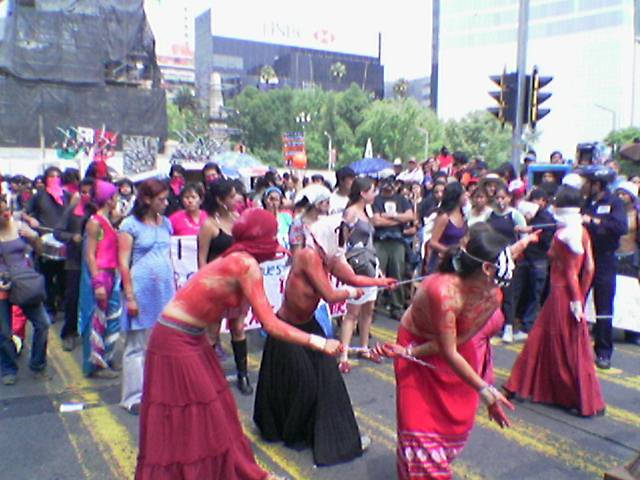
On May 3rd and 4th 2006 a brutal operation of police and military forces took place after the population had blocked roads to protest against the beating and arrest of some flower sellers the day before. During the confrontation police shot a 14-year-old boy and many people joined the protests in solidarity with the population. The following morning more than 3000 police with support of special forces and military invaded the village. More than 200 persons were arrested many heavily wounded. All the detained were tortured on the way to prison and all the women sexually tortured or raped in presence of the other detainees.
This was nearly two and half years ago, most of the detained were released on bail but 13 were sentenced to 31 to 112 years of prison.
This case is not only special because of the torture applied against the 50 women, it is also special because the women played a central role in the processes of resistance.
Let me read you a piece of a letter that was written by one of the women, a 25-year-old student.
“I am not the “victim” I am Norma Jimenez and I tell my name because I am not ashamed; shame is for the cowards who arrested us, who beat us up, who raped us, who tortured us, who took us to prison and maintain us prisoners since May 3rd and 4th. And of course for all those who gave them orders and talk about a so-called democracy in which they themselves do not even believe.
I am not a victim, I am a woman who does not shut up and who – in spite of the pain – is not going to take back her accusation. Not because I believe in the system of justice of the authorities, but because I am not willing to play their game and let everything be forgotten. People need to know what has happened and understand that if we accept it, there will be a repetition. We cannot and should not permit any more impunity.”
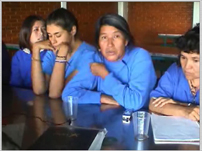
The women of Atenco from the first moment have NOT remained silent. With letters and documents from inside the prison, firstly anonymous and then with their names, they began to speak and accuse publicly. They used their first public presentation in their process to testify about the sexual torture they had suffered. These were important moments because only they could decide to break the silence but once they have taken this step, others can take up their testimonies and support them in their struggle.
Another important step was the collective legal accusation of the perpetrators. The women decided to take this step together because it gave them strength to face the process together with their comrades and they wanted to make clear that it is not just about some individual cases. The legal accusation was not born from the hope that there might be justice from the state authorities one day but the women wanted to make very clear that even if they were deeply affected physically and emotionally they are not broken and they are willing to take up and continue their struggle on all fronts.
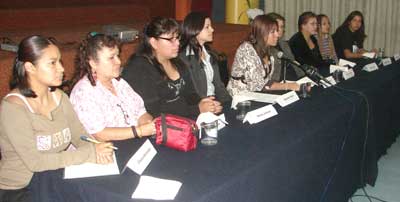
Torture and imprisonment try to shut down, try to suffocate the voices of those who suffer and want to generate a deadly silence in society. Speaking up, giving testimony breaks down the wall of silence. The wall of silence built inside the person and the wall of silence in society.
Giving testimony is a very difficult thing to do, narrating the horrors is like having to go through them once again, but it is necessary to leave the isolation torture wants to create.
There are other ways of expressing and narrating what has happened, literature, art, music that allow to express when it is impossible to find words. Who can put into words the suffering of hearing the shots that kill the beloved one? How can you find words for the pain of a mother whose child is taken away by the guards? Are there words to express what it feels to hear the screams of a comrade being tortured?
But there is a deep need to express and find a way to represent feelings, thoughts and emotions. Jacobo Silva Nogales, member of an armed movement in Mexico, the Revolutionary Army of Insurrect People, was arrested in 1999 and is since then held in a High Security Prison, most of the time completely isolated. During imprisonment he started to paint and has since then created an impressive collection of very strong paintings.
Holding on to one’s beliefs is a very important form of resistance. So many survivors have shown us that their torturers
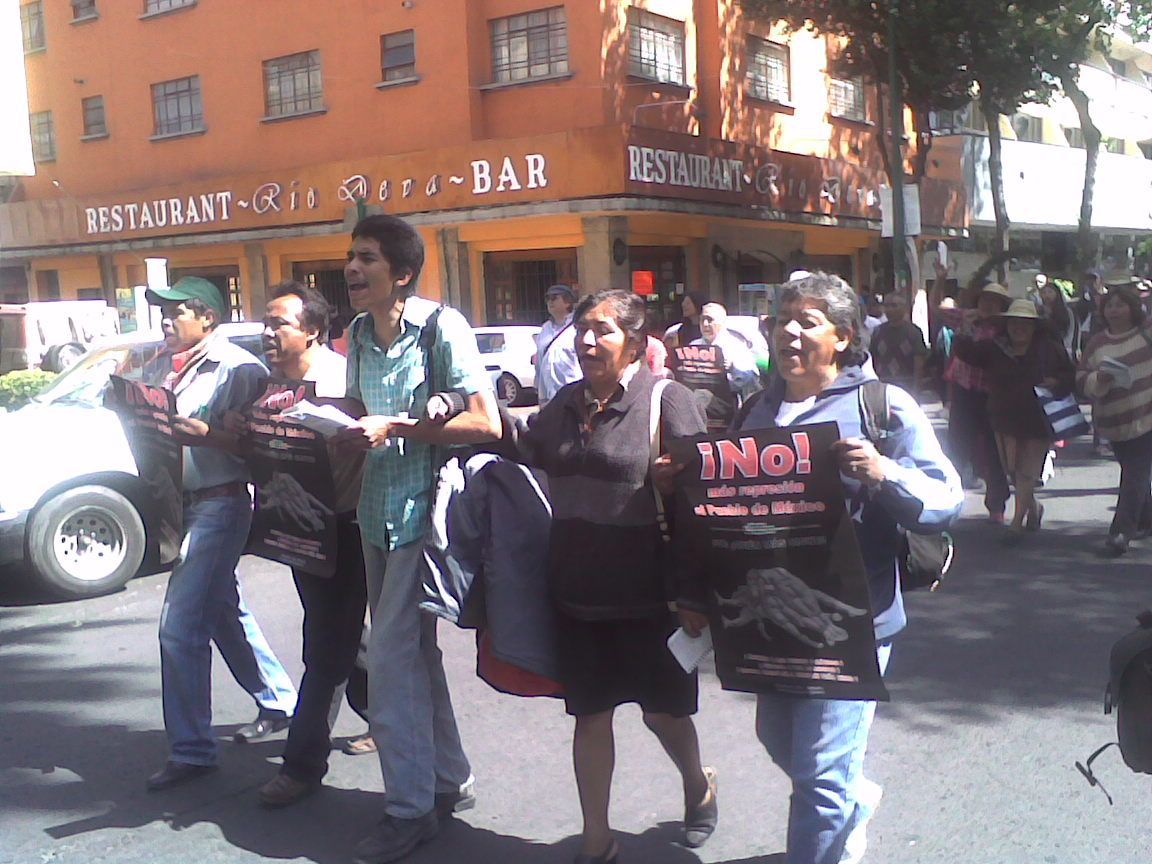 were able to subject and control their bodies, but did not succeed in taming their spirit, their will and their convictions. To reaffirm that there is an important part of the identity where the torturer has no access, is a source of strength.
were able to subject and control their bodies, but did not succeed in taming their spirit, their will and their convictions. To reaffirm that there is an important part of the identity where the torturer has no access, is a source of strength.In these days we have also heard a lot about solidarity, caring for each other under extremely difficult circumstances, and deep friendships that came to life in the midst of destruction, hate and desperation. Being received by caring hands after a torture session, sharing food that was brought by relatives with the cellmates is a profound demonstration of solidarity that is needed to continue and face the daily horrors of imprisonment. The women from Atenco told us that when they arrived at prison, beaten up, full of blood, shaking and terrified, they instinctively started what they called “The Line”. The guards ordered the newcomers to line up on the wall. The women who had arrived earlier would go up to
The experience has shown that those who are able to use the experience of torture for something, those who can somehow build on this experience and integrate it in their life, are suffering less in the long term. I think that it might be the time to take steps in this direction, learn from and build on the strength, the commitment and value of those who suffered for their dreams and convictions!
- - - - - - - - - - - - - -
Felicitas Treue is a psychologist/psychotherapist and member of Colectivo Contra la Tortura y la Impunidad (CCTI) - Collective against Torture and Impunity, a Mexican independent Human Rights Organization.
این آدرس ایمیل توسط spambots حفاظت می شود. برای دیدن شما نیاز به جاوا اسکریپت دارید
www.contralatortura.org
Andeesheh va Peykar Publications
www.peykarandeesh.org


